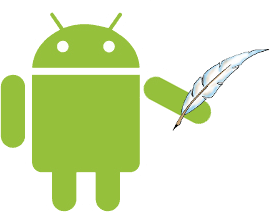
Manage your rooted android device with the simplicity of Windows Explorer
The Droid Explorer application was designed to be a small tool to manage your rooted android device with the simplicity of Windows Explorer.
Features
Multiple Device Support
Copy and auto-apply update.zip
Copy local files to device
Auto detection of connected/disconnected device
APK file icon and extended information
Device command shell window
Reboot device
Reboot device in to recovery mode
Open files for viewing / execution locally with the default file type executable
Drag & Drop file copy from Explorer
Flash Recovery Image
Package Manager (Install & Uninstall)
No need to mount SD card to access files from computer
Access files in other directories besides SD card
Copy files from device to local clipboard
Paste files from local clipboard to device
Open files on local machine
Display open with dialog to specify what to open a file with
Right click APK and Uninstall
Right click APK and Install
Delete files from device
Take a Screen Shot (landscape or portrait)
Plugins can register as a component to open files
Open from within Computer
Should now work with more ROMs as long as they are Rooted and have busybox
Device "Friendly Name" instead of device serial number.
Android Screencast Plugin - Control your android device with your mouse and keyboard
Install/Uninstall APK files right from explorer
Standalone plugin runner (will mainly be used for windows 7 jump lists and the apk installer but can be used to run any plugin.
Better Hero Support
Backup the "Google Experience" applications and creates an update.zip containing the applications
Use an existing Android SDK with Droid Explorer, or let Droid Explorer set up the SDK for you.
Device Requirements
Rooted Android Device with busybox
PC Requirements
Windows (looking for a developer to help create UI for mono)
.NET Framework 3.5 SP1
Some plugins require Java Runtime Environment and Java Web Start
I'd like any thoughts you may have for other features to add to Droid Explorer. Report bugs or request features here or on the project issue tracker.
Web Installer (x86)
Requires internet connection to download android sdk tools
x86 Serivce will not work on x64 OS
Web Installer (x64)
Requires internet connection to download android sdk tools
Use this install if running a 64 bit OS













